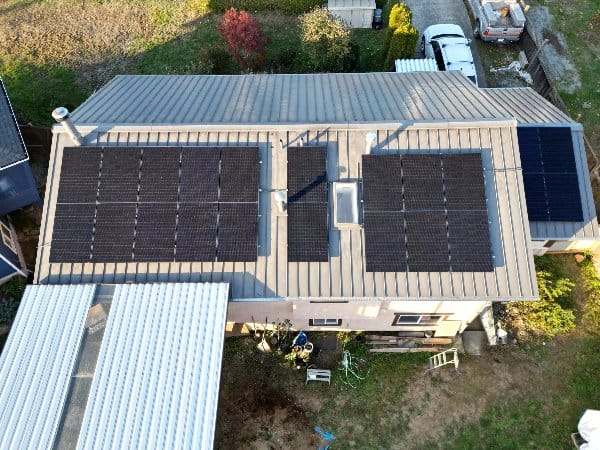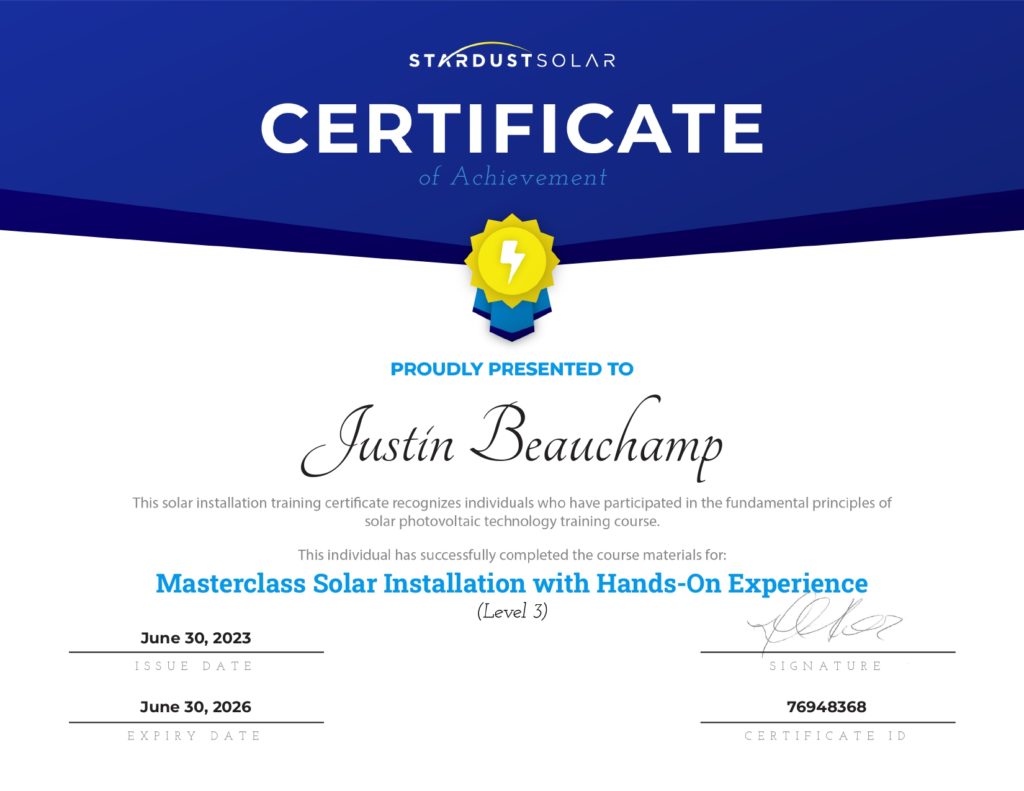The use of solar energy has been steadily growing in recent years, driven by its cost-effectiveness and environmental advantages compared to conventional energy sources. As per the survey, over 115,000 homes requested estimates for residential solar power systems in August 2022 alone.
So, what more now that many people know a solar setup for home brings numerous benefits, including reduced electricity bills, lower carbon emissions, and increased energy independence?
While solar systems are already beneficial, you can further enhance their performance and longevity by completing your home solar setup with the right components. But what are those? What more can you add for an ultimate home solar solution? And what else do you need to know about solar systems? Read on.
How Solar Systems Work
Solar systems capture the sun’s energy and convert it into electricity through the photovoltaic effect. Here’s a breakdown of this process:
| Step 1 | Absorption of Sunlight | Solar panels comprise photovoltaic cells, commonly composed of silicon semiconductor materials. Photons are absorbed when sunlight hits the surface of these cells, exciting electrons within the material. |
| Step 2 | Generation of Electric Current | The excited electrons create an imbalance of charge, generating an electric current. This direct current (DC) flows through the photovoltaic cells and is collected by metal contacts on the panel. |
| Step 3 | Conversion to Alternating Current | The solar panels create direct current (DC) electricity, but our homes and appliances use alternating current (AC). An inverter transforms the DC output from the panels into usable AC electricity to bridge this gap. |
| Step 4 | Utilization of Electricity | The solar panels generate AC electricity, directly powering your home’s devices and appliances. Any surplus electricity can be fed back into the grid for others to use or stored in batteries for your future needs. |
Must-Have Additions for Your Home Solar Setup
While these additions are optional, they can upgrade a solar system setup for an ultimate solar solution:
Solar Tracker
Solar trackers are devices that automatically adjust the solar panel position to track the sun’s movement throughout the day. This optimization allows panels to capture more sunlight, increasing energy production. A solar tracker can significantly improve the efficiency of your solar setup, especially in areas with variable sunlight conditions.
Smart Home System
Integrating your solar setup with a smart home system allows for seamless monitoring and control of energy usage. Smart home systems enable you to:
- Monitor your energy production remotely
- Track electricity consumption
- Automate certain functions based on energy availability
It provides greater flexibility and control over your energy usage, optimizing the benefits of your solar setup.
Power Inverters
Power inverters are important components of a solar power system. They convert the DC (direct current) from solar panels into AC (alternating current) used by household appliances. High-quality power inverters ensure efficient energy conversion and reliable performance of your solar setup. Advanced inverters may also offer features such as grid connectivity and battery storage integration to enhance the functionality of your system.
Solar Panel Cleaning System
Regular maintenance ensures the optimal performance of solar panels. A solar panel cleaning system automates the cleaning process, removing dust, dirt, and other debris that can accumulate on the surface of panels and hinder sunlight absorption. By keeping your panels clean, you can maximize energy production and prolong a solar setup’s lifespan.
Surge Protection Devices (SPD)
Surge protection devices safeguard your solar power system from voltage spikes and electrical surges, which can damage sensitive components and reduce overall system efficiency. Installing surge protection devices helps protect your investment and ensures uninterrupted operation of your solar setup, especially during adverse weather conditions or electrical disturbances.
Selecting the Right SPD
- Identify the types of loads powered by your solar system, including critical, non-critical, and occasional loads.
- Assess the risk of surges and determine the level of SPD protection needed for each type of load. Consider factors such as the likelihood of lightning-induced surges damaging equipment.
- Familiarize yourself with the SPD requirements outlined by equipment manufacturers, standards bodies, and regional electrical codes.
- Choose the suitable SPD types for each load category, considering various ratings and features to ensure optimal protection.
How to Plan Your Home Solar System
When planning to set up a solar system, several factors should be considered:
- Energy Consumption: Assess your household’s energy needs to know the size and capacity of your solar power system.
- Roof Orientation and Shading: Assess the orientation and shading of your roof to optimize sunlight exposure for solar panels.
- Local Regulations and Incentives: Research local regulations, permits, and incentives for solar installations, which may vary by region.
- Budget and Financing Options: Consider your budget and explore financing options such as solar loans, leases, or power purchase agreements (PPAs).
- Professional Assessment: Consult a qualified solar installer or company, like MAG Solar, to assess your site and design a customized solar solution that meets your needs.
Setting Up a Home Solar Power System
Setting up a solar power unit at home involves several steps:
- Site Assessment: Assess your property to know the best location for solar panels based on sunlight exposure, roof orientation, and shading.
- System Design: Work with a professional installer to design a solar power system tailored to your energy needs and site conditions.
- Permitting and Approval: Obtain necessary permits from local authorities before installing your solar systems.
- Installation: Install solar panels, inverters, mounting hardware, and electrical wiring according to manufacturer specifications and local building codes.
- Commissioning: Test and commission the solar power system to ensure proper operation and connectivity to your home’s electrical system.
- Monitoring and Maintenance: Regularly monitor your solar setup for performance and maintenance needs, such as cleaning panels and inspecting components for wear or damage.
DIY vs Professional Solar Installation
- Expertise and Experience: Professional solar installers have the knowledge, skills, and experience to install solar systems correctly, ensuring optimal performance and efficiency.
- Warranty and Support: Solar installation companies offer warranties and ongoing support for their installations, providing peace of mind and protection for your investment.
- Quality Assurance: Professional installers use high-quality components and follow industry best practices, which minimize the risk of installation errors or safety hazards.
- Regulatory Compliance: Solar installers are familiar with local regulations, permitting requirements, and building codes, ensuring compliance and avoiding potential legal issues.
- Time and Convenience: Hiring a professional installer saves you time and effort, so you can focus on other priorities while experts handle the installation process.

Plan and Complete Your Solar Set-up
Completing your solar setup for home with additions like solar trackers, smart home systems, power inverters, solar panel cleaning systems, and surge protection devices can enhance your solar power system’s performance, efficiency, and longevity.
By understanding how solar panels work, the components of solar power systems, and the planning and installation process, you can make informed choices and maximize the advantages of solar energy for your home.
While DIY installation is an option, partnering with a professional solar installation company like MAG Solar offers numerous advantages in expertise, support, quality, compliance, and convenience. If you’re ready to embrace solar energy and take control of your electricity costs, consider investing in a comprehensive solar setup for your home today.
Choose MAG Solar for professional solar panel installation that boosts your home’s value.
Frequently Asked Questions
Are solar systems safe?
Yes. Solar panels meet international inspection and testing standards and are installed by qualified professionals to comply with local building, fire, and electrical codes. Certified electricians conduct thorough inspections during installation, and panels are sealed with encapsulants to prevent chemical leaching.
Are solar PV panels different from solar thermal panels?
Solar PV panels and solar thermal panels harness energy from the sun but through different technologies. Solar PV panels generate electricity using the photovoltaic effect, where photons from sunlight cause electrons to be released in a semiconductor material like silicon.
On the other hand, solar thermal panels directly heat water or other fluids using sunlight. In domestic settings, solar thermal panels are installed on rooftops to heat water stored in a cylinder for hot water and heating purposes. Solar thermal can also be used in larger-scale applications like power stations.
How long does a solar panel last?
Most solar panels have 25-30 years lifespan, with reputable manufacturers offering production warranties for at least 25 years. On average, the break-even point for energy savings from solar panel installation is between six to 10 years.

